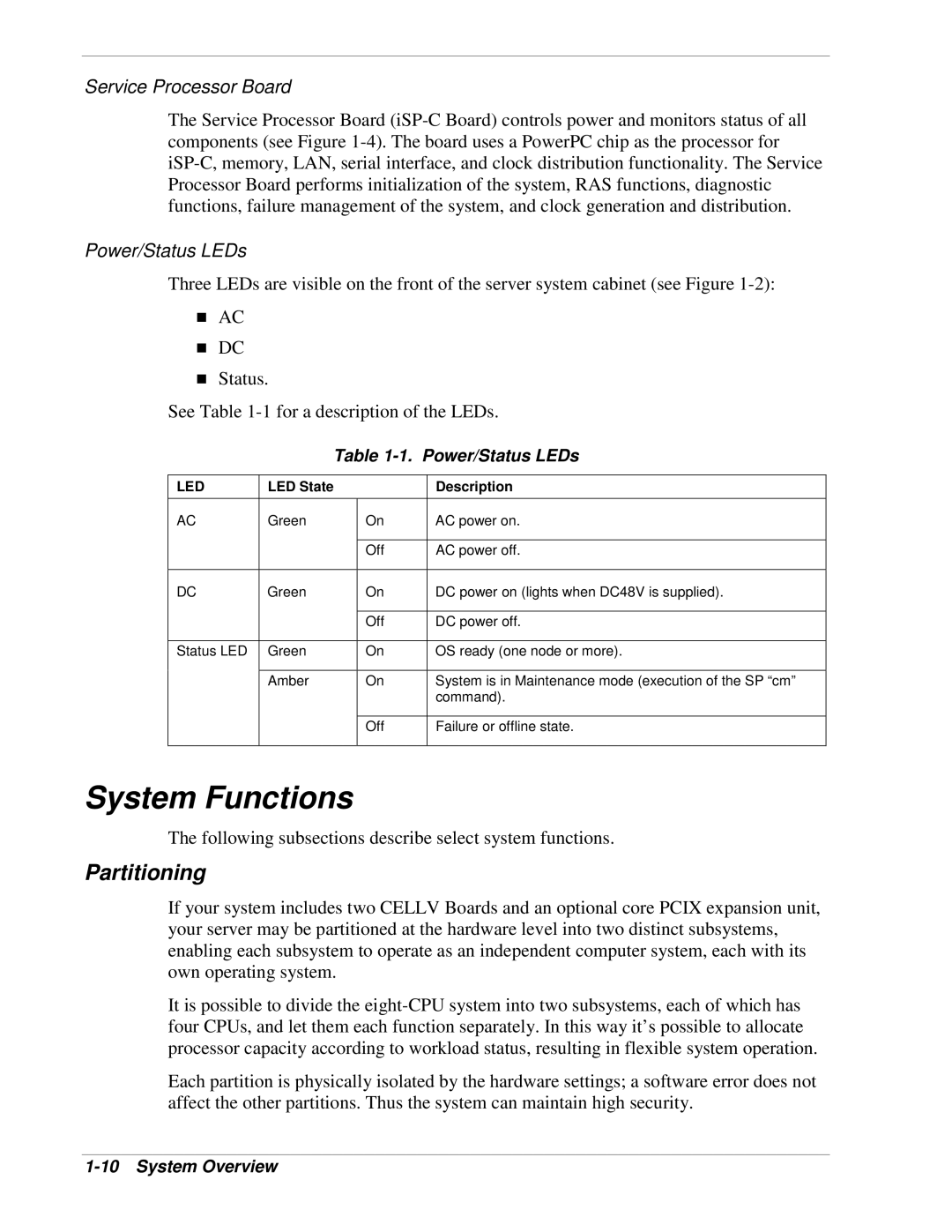
Service Processor Board
The Service Processor Board
Power/Status LEDs
Three LEDs are visible on the front of the server system cabinet (see Figure
!AC
!DC
!Status.
See Table
Table 1-1. Power/Status LEDs
LED | LED State |
| Description |
AC | Green | On | AC power on. |
|
|
|
|
|
| Off | AC power off. |
|
|
|
|
DC | Green | On | DC power on (lights when DC48V is supplied). |
|
|
|
|
|
| Off | DC power off. |
|
|
|
|
Status LED | Green | On | OS ready (one node or more). |
|
|
|
|
| Amber | On | System is in Maintenance mode (execution of the SP “cm” |
|
|
| command). |
|
|
|
|
|
| Off | Failure or offline state. |
|
|
|
|
System Functions
The following subsections describe select system functions.
Partitioning
If your system includes two CELLV Boards and an optional core PCIX expansion unit, your server may be partitioned at the hardware level into two distinct subsystems, enabling each subsystem to operate as an independent computer system, each with its own operating system.
It is possible to divide the
Each partition is physically isolated by the hardware settings; a software error does not affect the other partitions. Thus the system can maintain high security.
